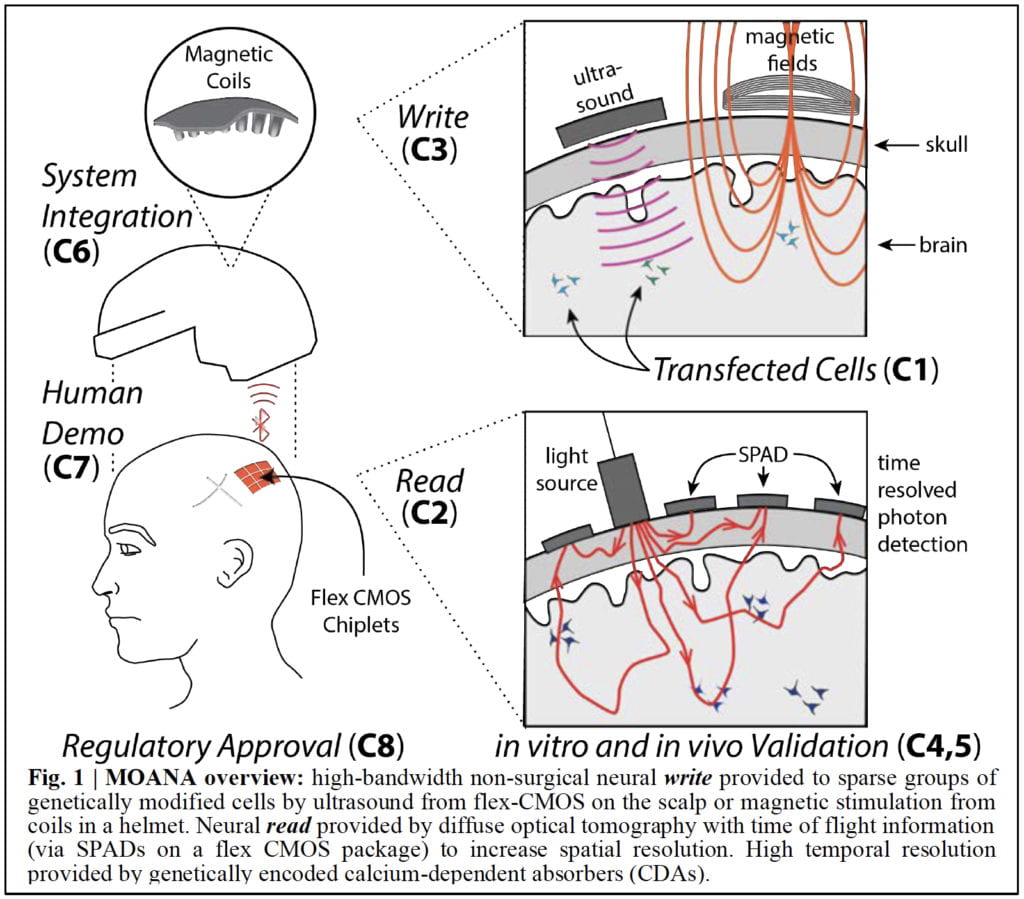Towards a Brain-Computer Interface
To create a high-bandwidth brain-computer interface without a surgically implanted device, one must overcome the limited spatial and temporal resolution of available non-invasive neural interfaces. Currently, spatial resolution is limited because scattering and absorption produced by the scalp, skull, and brain tissue creates a difficult source localization problem, and makes it difficult to direct energy to small regions of the brain for stimulation. Temporal resolution, on the other hand, is limited because many of the endogenous indicators of neural activity like blood flow and blood oxygenation have response times of several hundred milliseconds.
To overcome these challenges a multi-institutional team has been formed, including scientist, engineers, and biologists from Duke, Rice, Columbia, MIT, Yale, and NYU. Funded by DARPA’s N3 program, this group is now working towards the introduction of genetically engineered biomolecules to monitor and manipulate neural activity with high-temporal resolution. Furthermore, it is planed to use a combination of ultrasound-targeted transgene expression, along with sparse labeling techniques to improve the spatial resolution of read and write channels. The resulting minutely invasive neural interface (TA2) is expected to achieve a bidirectional neural link capable of the kind of high spatial and temporal resolution that is currently only possible using surgically implanted devices. Dr. Hielscher and his team are working on the optical tomographic image reconstruction schemes to read out neural signals in realtime (<10ms) with high spatial resolution (<50μm).

Read more here:
DARPA-2019
DARPA-NEWS
https://www.theengineer.co.uk/moana-rice-darpa/
Rice News
UK-Metal